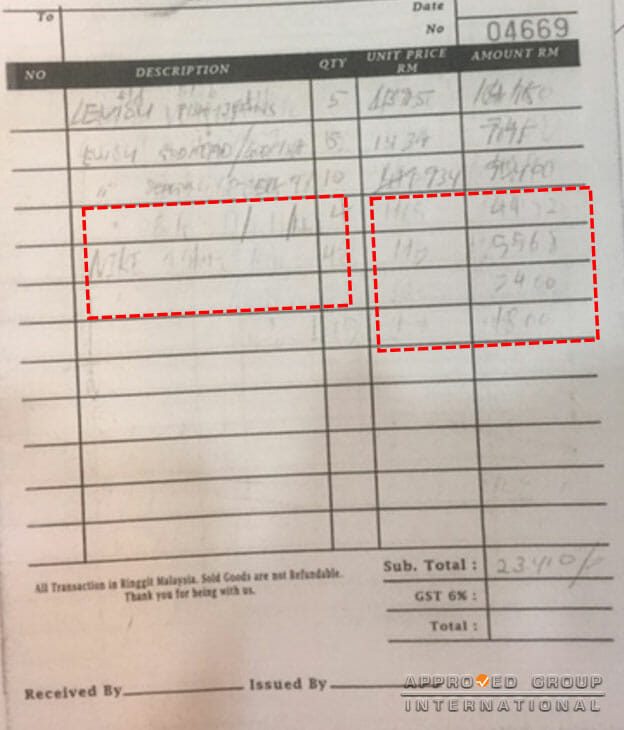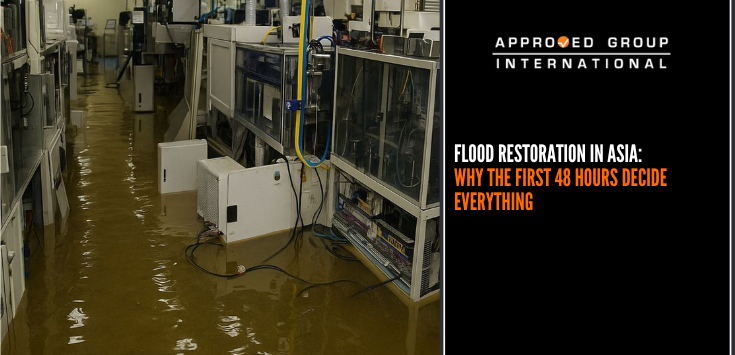AFSB was approached to determine the authenticity of two (2) invoices that were submitted for insurance claims purposes.
Our team was provided with digital images of two (2) invoices containing overlapping handwritings which were claimed to be genuine by the claimant. The questioned invoices will be hereafter referred to as Invoice A and Invoice B throughout this article.
The digital images of Invoice A and Invoice B were subjected to macroscopical analysis and image post-processing technique known as the thresholding enhancement technique to prove alteration. The technique was employed to enhance the pixels of the overwritten handwriting while diminishing the pre-existing handwriting on the invoices. From the macroscopical analysis, the Team found that there were no authorised stamp or signature to prove that the invoices were issued by the alleged company. The sum of the price of purchased goods listed did not equate to the amount as written in the ‘Grand Total‘ column. The results of document thresholding were as represented in the following Table 1.
Table 1: Results of Thresholding Enhancement
Invoice A


Invoice B


The pre-existing handwriting on Invoice A and Invoice B diminished after thresholding enhancement, leaving only the overwritten handwritings visible on the invoice after enhancement. The pre-existing handwritings are indicated by red dotted boxes and lines in the Table 1 above. The invoices submitted by the claimant were proven to possess evidence of alteration (overwriting) and not genuine. The purchase details on the invoices were altered by overwriting on a pre-existing document.























